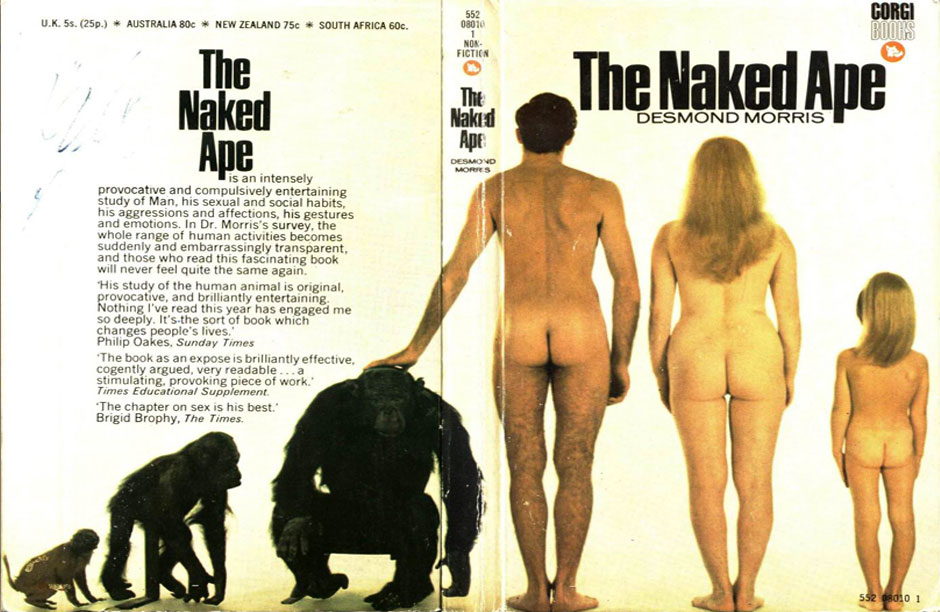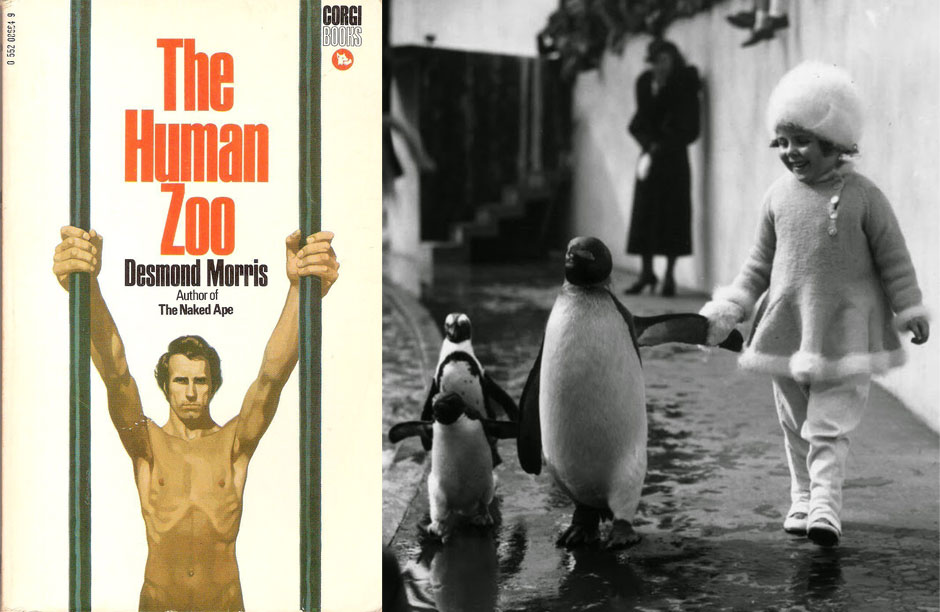PAST ISSUES
 The 1967 cover of zoologist and ethologist Desmond Morris’s sensational book "The Naked Ape", which was followed shortly by The Human Zoo (1969) in which he exposes the illusionary line between us and animals, and sheds light on the discontents found in human society by drawing parallels to animals in captivity.
The 1967 cover of zoologist and ethologist Desmond Morris’s sensational book "The Naked Ape", which was followed shortly by The Human Zoo (1969) in which he exposes the illusionary line between us and animals, and sheds light on the discontents found in human society by drawing parallels to animals in captivity. Left: The cover of "The Human Zoo" (1969) by British zoologist and ethologist Desmond Morris. Right: A little girl walks hand in flipper with a penguin at the London Zoo in 1937. The first time the word “zoo” was used to describe a menagerie or a biological research center open to the public was the Zoological Society of London, which opened its gates in 1828. The world’s first official zoo was the Vienna Zoo (Tiergarten Schönbrunn) which opened as part of the imperial menagerie in 1752.
Left: The cover of "The Human Zoo" (1969) by British zoologist and ethologist Desmond Morris. Right: A little girl walks hand in flipper with a penguin at the London Zoo in 1937. The first time the word “zoo” was used to describe a menagerie or a biological research center open to the public was the Zoological Society of London, which opened its gates in 1828. The world’s first official zoo was the Vienna Zoo (Tiergarten Schönbrunn) which opened as part of the imperial menagerie in 1752.
Flash Back: 1969
British-born zoologist Desmond Morris wrote the The Naked Ape (1967) after eight years at the Zoological Society of London working as a researcher, curator and TV producer. Most of his doctorate and post doctorate studies at Oxford University and at the Zoological Society focused on the reproductive behavior of animals – ranging from birds to apes. When The Naked Ape published, it was so widely received that he left his post at the Zoological Society to focus more of his time on writing. Within the first chapter of The Naked Ape we learn that humans actually evolved to become “naked”, or hairless, once we started dwelling in the same place and sleeping often in the same bed. Mites, microbes, and other bacteria, learned to dwell in those places too. Hair became a harbor for these creatures, and eventually we began to shed it. Dwelling in the same place and building villages eventually also led to modern society, which is the subject of his sequel to The Naked Ape – The Human Zoo (1969). In the introduction to The Human Zoo Morris wrote:
“When the pressures of modern living become heavy, the harassed city-dweller often refers to his teeming world as a concrete jungle. This is a colorful way of describing the pattern of life in a dense urban community, but it is also grossly inaccurate, as anyone who has studied a real jungle will confirm.
Under normal conditions, in their natural habitats, wild animals do not mutilate themselves, masturbate, attack their offspring, develop stomach ulcers, become fetishists, suffer from obesity…commit murder. Among human city-dwellers, needless to say, all these things occur…The zoo animal in a cage exhibits all these abnormalities that we know so well from our human companions. Clearly, then, the city is not a concrete jungle, it is a human zoo.”
